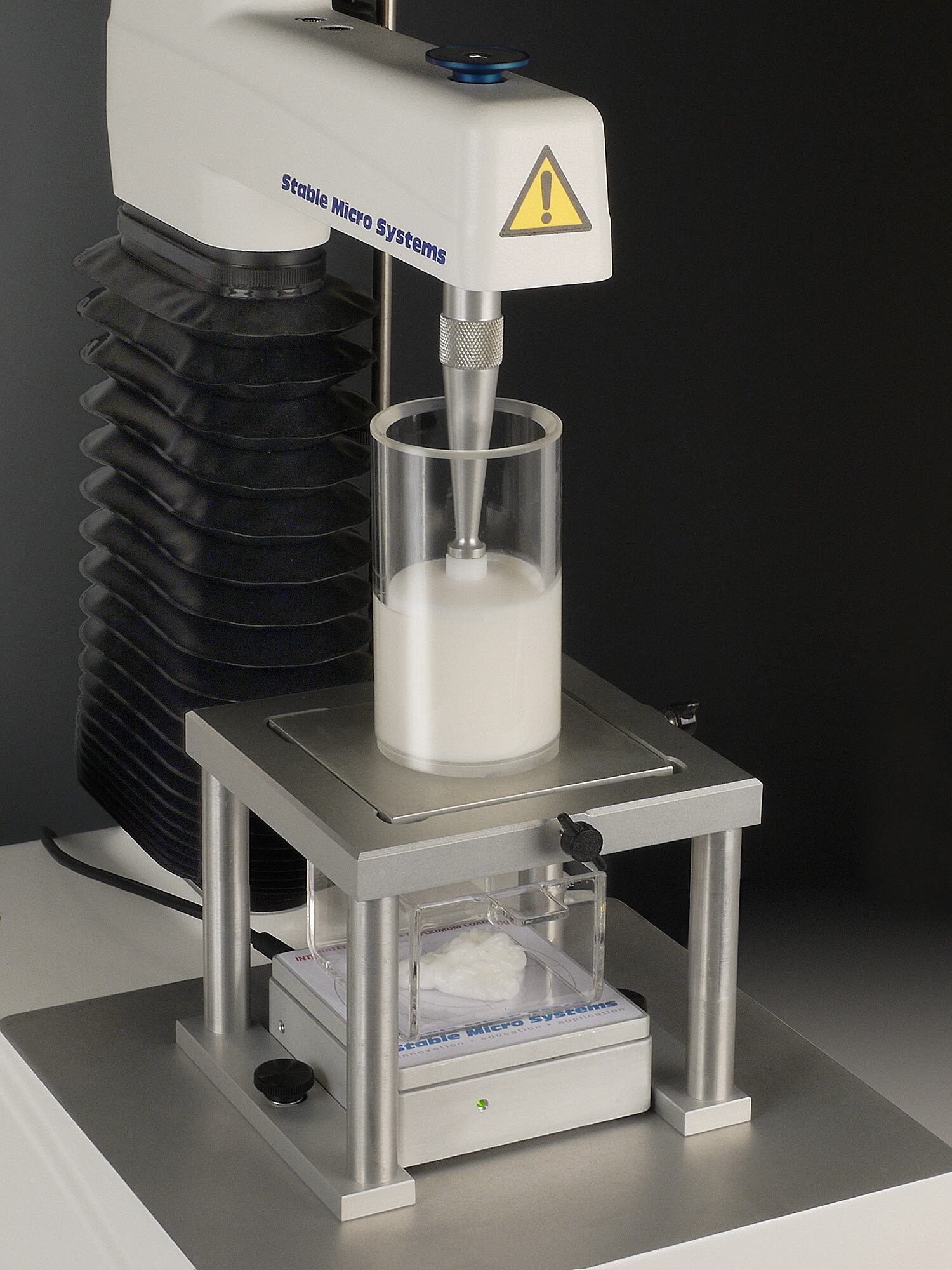The firm has launched its Dynamic Integrated Balance for use with the Plus range of Texture Analysers to tackle the issue.
The accessory enables users to measure an additional ‘weighing’ parameter during standard force measurement tests.
Customer demand
Jo Smewing, applications manager, Stable Micro Systems told FoodQualityNews.com it was launched after requests from customers requiring the measurement type during product testing.
“If it is too difficult to remove a product from its packaging, it is probable that consumers will have a negative experience, discouraging them from repeating purchase of that particular brand in the future,” she said.
“Consumer dissatisfaction may also occur if too much/little of a product is delivered. For example, if excessive amounts of product are deposited this may lead to product wastage.”

The configuration between the texture analyser and the dynamic weighing system means that during the extrusion or actuation test, the deposited amount of product can be weighed at the same time as force, distance and time data is collected.
Once the test is complete, users are able to analyse the amount and rate at which the product was deposited on a second axis alongside their usual force data.
Typical applications vary and include food sachets and pouches, said the firm.
Product removal
The ease of removal of a product is a primary concern because consumers should not have to apply excessive force to remove a product from its packaging but, leakage and waste, must be avoided.
A texture analyser can be used to measure this force, by imitating the action that the consumer would use (i.e. squeezing a packaging). Manufacturers are also interested in the amount of product being delivered as a result of the squeezing.
“As the texture analyser measures the amount of force applied to remove the product, the balance (which measures weight) simultaneously collects and weighs the product that is deposited,” Smewing said.
“When used together, the texture analyser and the balance enable manufacturers to not only measure the ease of removal of a product from its packaging, but also the quantity delivered as a result of this force.”
Extrusion and actuation testing
Typical applications of the type of testing range from extrusion tests to actuation tests.
“When squeezing a tube of tomato puree or mayonnaise a sample is extruded from the packaging, out through a hole,” Smewing added.
“The measurement of this extrusion force is a typical quality control test that a texture analyser can perform.
“Similarly, when you push down on a ketchup dispenser you are ‘actuating’ the delivery of the ketchup. An actuation test is another common use of a texture analyser to measure the force required to push down on the plunger to deliver the ketchup.”
The weighing system can collect data from 500 points per second and is time synchronised, allowing the force data to be measured against duration and overlaid on to a graph.
“Simultaneously, another graph is superimposed on to this, which shows the weight and rate of deposition of the product,” Smewing said.
“This not only enables the ease of removal of product contents to be measured but also the delivered quantity as a result of the effort.”
